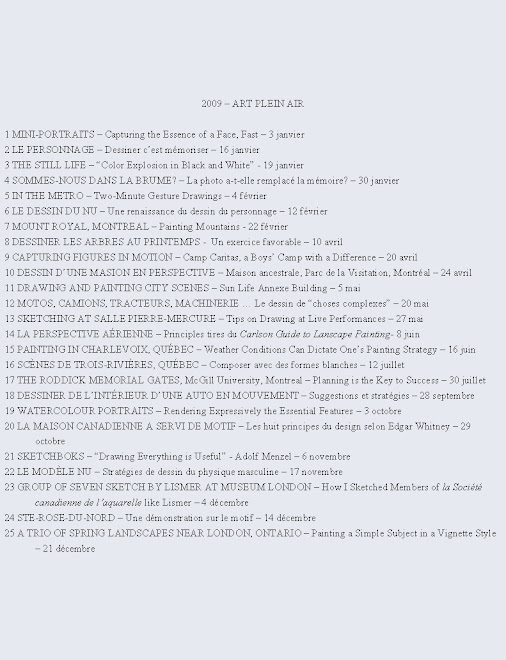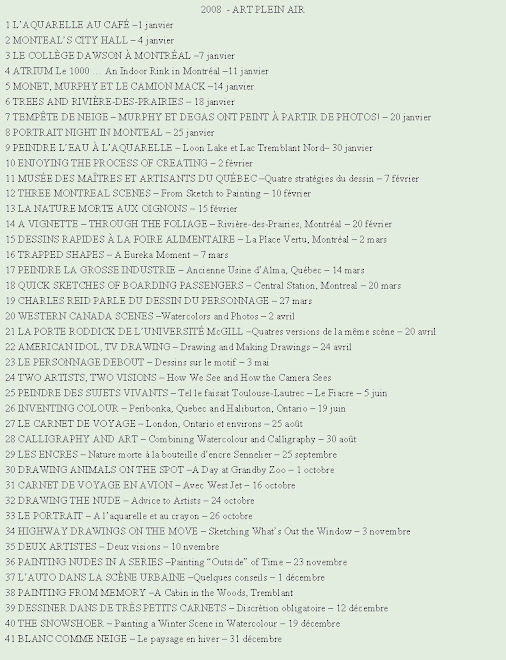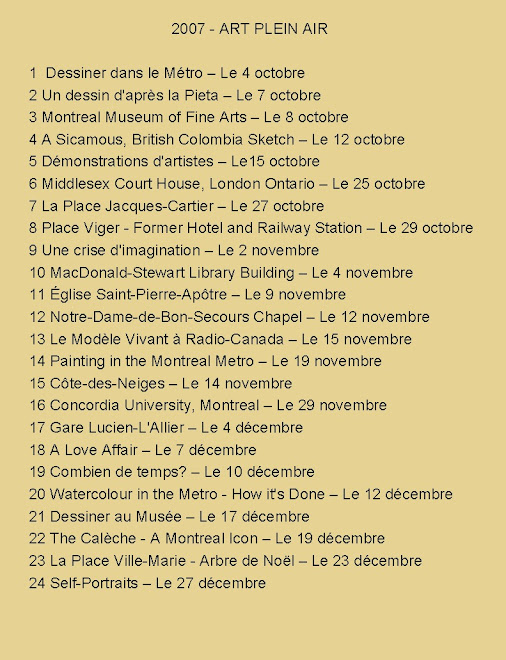“In no process that I know of – least of all in sketching – can time be really gained by precipitation.” From The Elements of Drawing by John Ruskin
Finding a motif in farm country
Recently as I drove north of the town of London, Ontario I came upon wonderful vintage farm structures on Five, Six or Seven … Mile Road. I found tightly-knit clusters of trees, bushes, fields and buildings silhouetted against a plain skyline just waiting to be sketched and painted.
Varied shapes, denuded trees in late November
The varied shapes of houses, deciduous and evergreen trees contrasting against a plain background were begging to be painted. I find it easier to represent the intricate forms of trunks and branches at this time of the year especially because deciduous trees are leafless.
Nature’s muted colors are at their best in late fall
Summer is not my favorite painting season mainly because I do not like the stark redundant greens of the season. I prefer landscape painting either in the spring or fall right up to the first snow fall. Then I retreat to the comfort of a warm studio. Although the air can be quite cool in November and not practical for outdoor work I usually work from my car when possible.
Choice of paper is relative to the situation
“Once you have mastered basic watercolor techniques using one kind of paper,” I tell my students, “experiment with different papers. Choose one that suits the subject matter before you.” For these subjects I chose Strathmore Aquarius II paper – a very white paper - for two reasons. First, the skies were quite white resembling the pure white of Aquarius II paper. Secondly, I wanted to draw the subject in ink. Its smooth surface is ideal for ink work.
Drawing directly with a waterproof Indian ink pen
I outlined the forms directly in ink with no preliminary pencil drawing knowing that the drawing could not be altered or erased. Following John Ruskin’s advice, I did not precipitate or rush the drawing phase but observed intensely and measured mentally before putting down any line on the paper. When painting from the motif at this time of year in northern latitudes the sun is low on the horizon for long periods of time. Therefore, the quality and intensity of light will change little over a long period, an advantage to on site work.
Invention and choice of “vignette” style for these
In reality, there were no roads, paths or fields leading into the picture in these three scenes. I invented them to let the viewer enter visually. The vignette style, where one does not paint right up to the borders, allows one to focus more on the center of interest - here the area around the buildings. Finally, I wanted these watercolors to have the feel of a drawing. Therefore, I left a good portion of the paper untouched like in a sketch.
Simple subjects sometimes produce best results
Sometimes, it is while painting simple small formats subjects that I find greater pleasure. I was quite satisfied while I painted these and also with the result. Why not try painting a similar subject in your area? You might also enjoy it.
Raynald Murphy sca


























